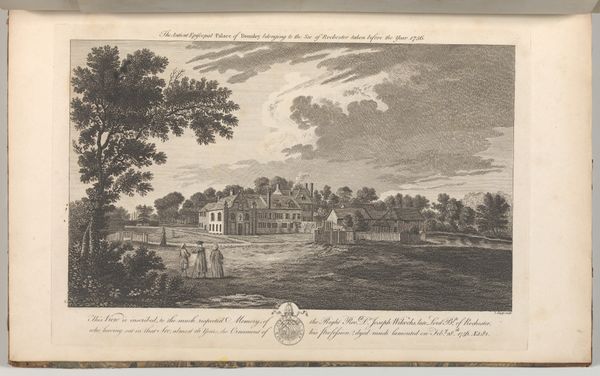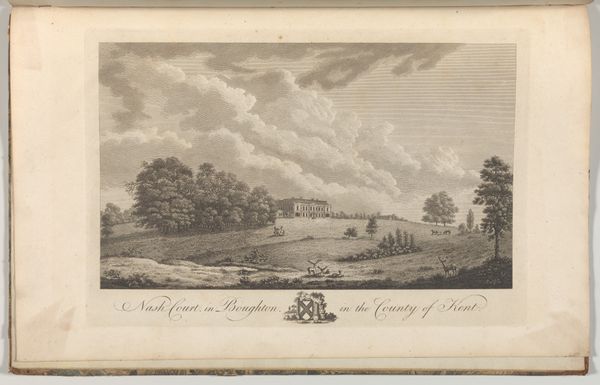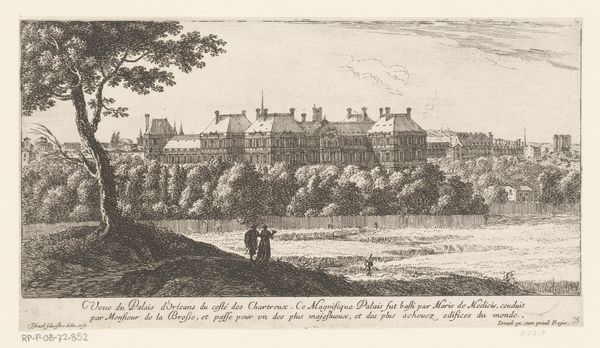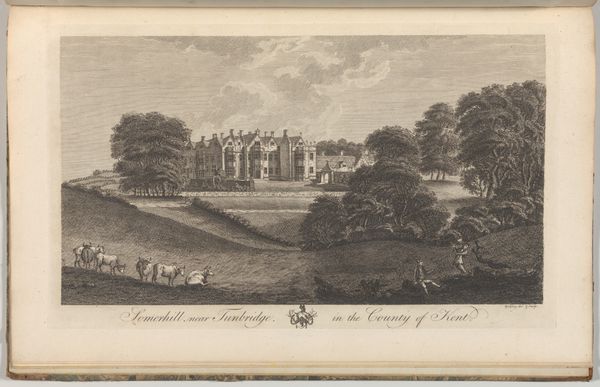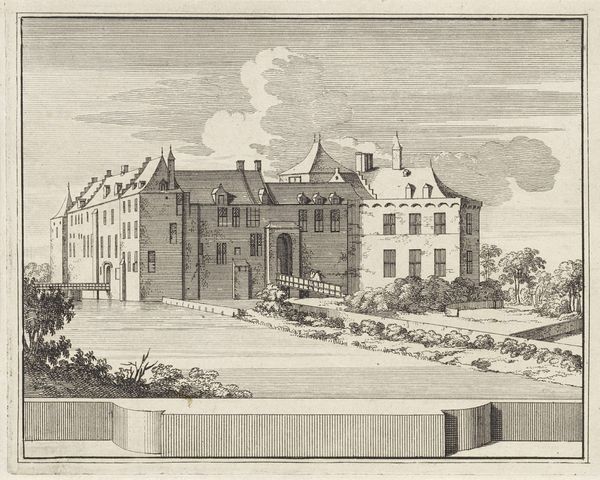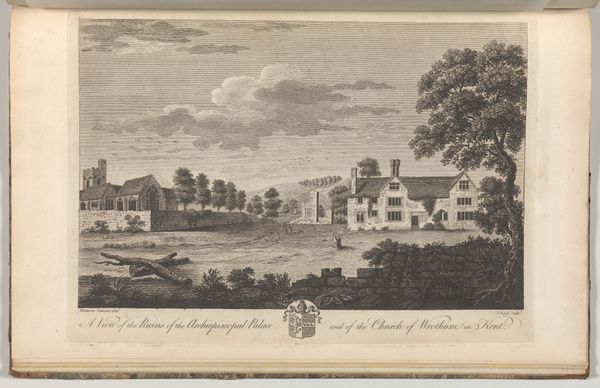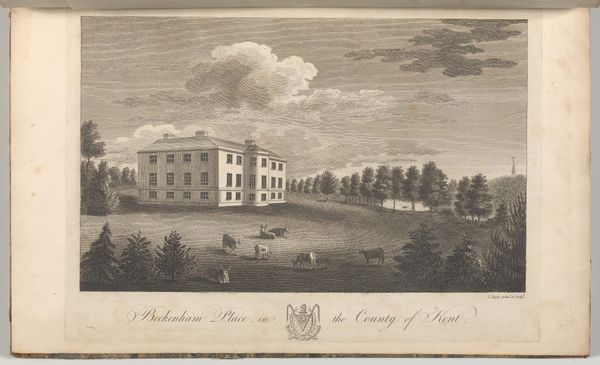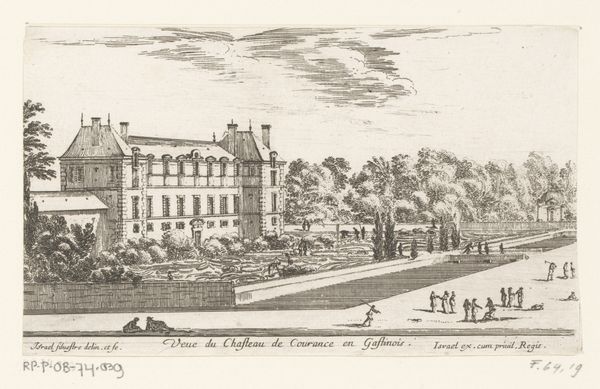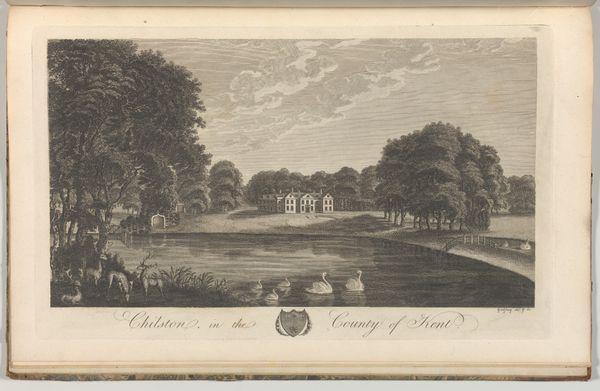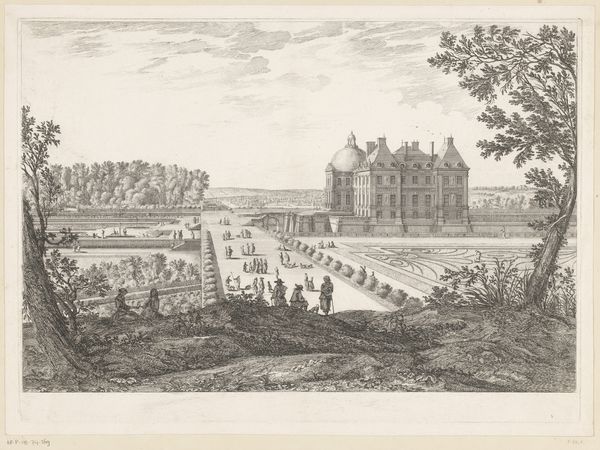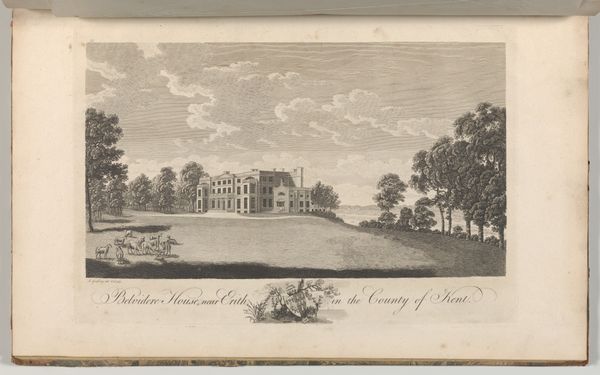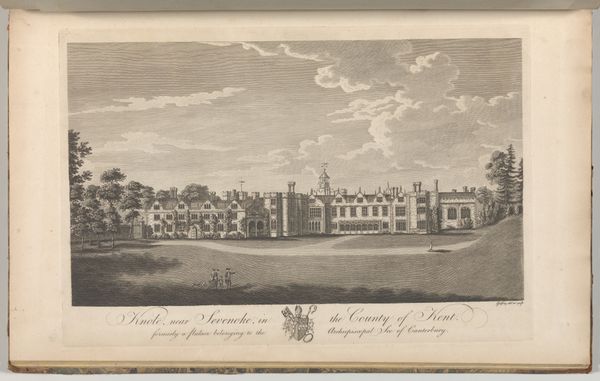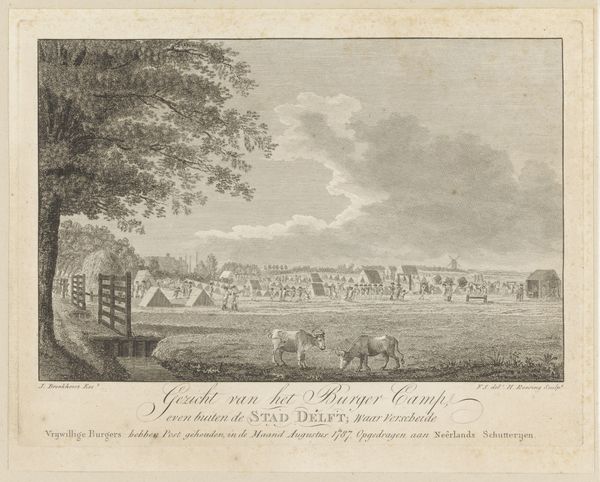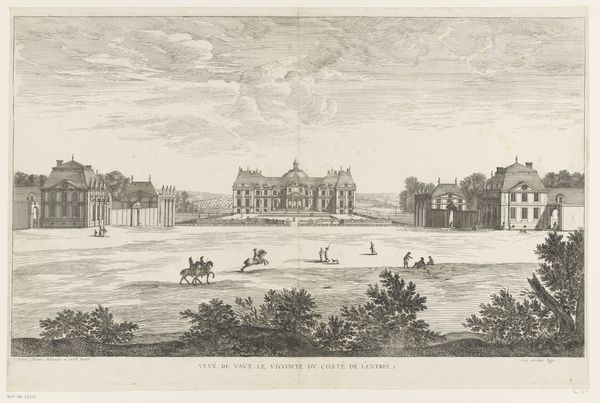
Montreal, near Sevenoke, in the County of Kent, from Edward Hasted's, The History and Topographical Survey of the County of Kent, vols. 1-3 1777 - 1790
0:00
0:00
drawing, print, etching, engraving
#
drawing
#
neoclassicism
# print
#
etching
#
landscape
#
cityscape
#
history-painting
#
academic-art
#
engraving
#
building
Dimensions: Book: 17 5/16 × 11 × 13/16 in. (44 × 28 × 2 cm) Sheet: 16 15/16 × 10 5/8 in. (43 × 27 cm) Plate: 10 1/16 × 14 in. (25.5 × 35.5 cm)
Copyright: Public Domain
Curator: The print before us, titled "Montreal, near Sevenoke, in the County of Kent", hails from Edward Hasted's, *The History and Topographical Survey of the County of Kent*, dating between 1777 and 1790. William Watts is credited for its creation, employing etching and engraving techniques. It currently resides at the Metropolitan Museum of Art. Editor: It strikes me as incredibly peaceful. The soft grays and meticulous detailing create a very ordered vision of the English countryside, but a little lifeless. It is all so precise, like a stage set rather than a landscape of labor. Curator: That stillness resonates, doesn't it? Think about the rise of Neoclassicism in that era—its focus on order, reason, and idealised form is reflected here. Even the landscape serves as a backdrop to emphasize social structure and ownership. Editor: Yes, exactly! I am curious about the actual production of this print. Who was involved? Were they local artisans, part of a larger workshop tied to Hasted's publication? The materiality of paper and ink, and its replication… that's where the real story lies, beyond the superficial pleasantness. Curator: That brings up interesting questions of labor and commodification of landscape imagery. Yet consider, too, the symbolic weight of the stately home and its position on the hill. The vista is carefully curated—it evokes not just the land, but ideas of permanence and inherited power, very prominent in the aristocratic families' visual language of the period. It is all visual branding. Editor: The 'visual branding' probably made the work very profitable for all involved! Still, how was the copper plate created for this etching, how many prints were made before it degraded? How were the raw materials sourced, by whom, and under what social conditions? Even the "academic art" designation speaks to a particular process, an endorsement of craft bound up with prestige. Curator: A valid and thought-provoking point, offering a tangible grounding to the image, connecting it to networks of making and exchange. I was so captured by how such a serene image transmits very persuasive concepts of power! Editor: And by examining the concrete conditions of its creation, we recognize the hidden hands, the actual social networks required to transmit any vision of power and prestige in material form.
Comments
No comments
Be the first to comment and join the conversation on the ultimate creative platform.
